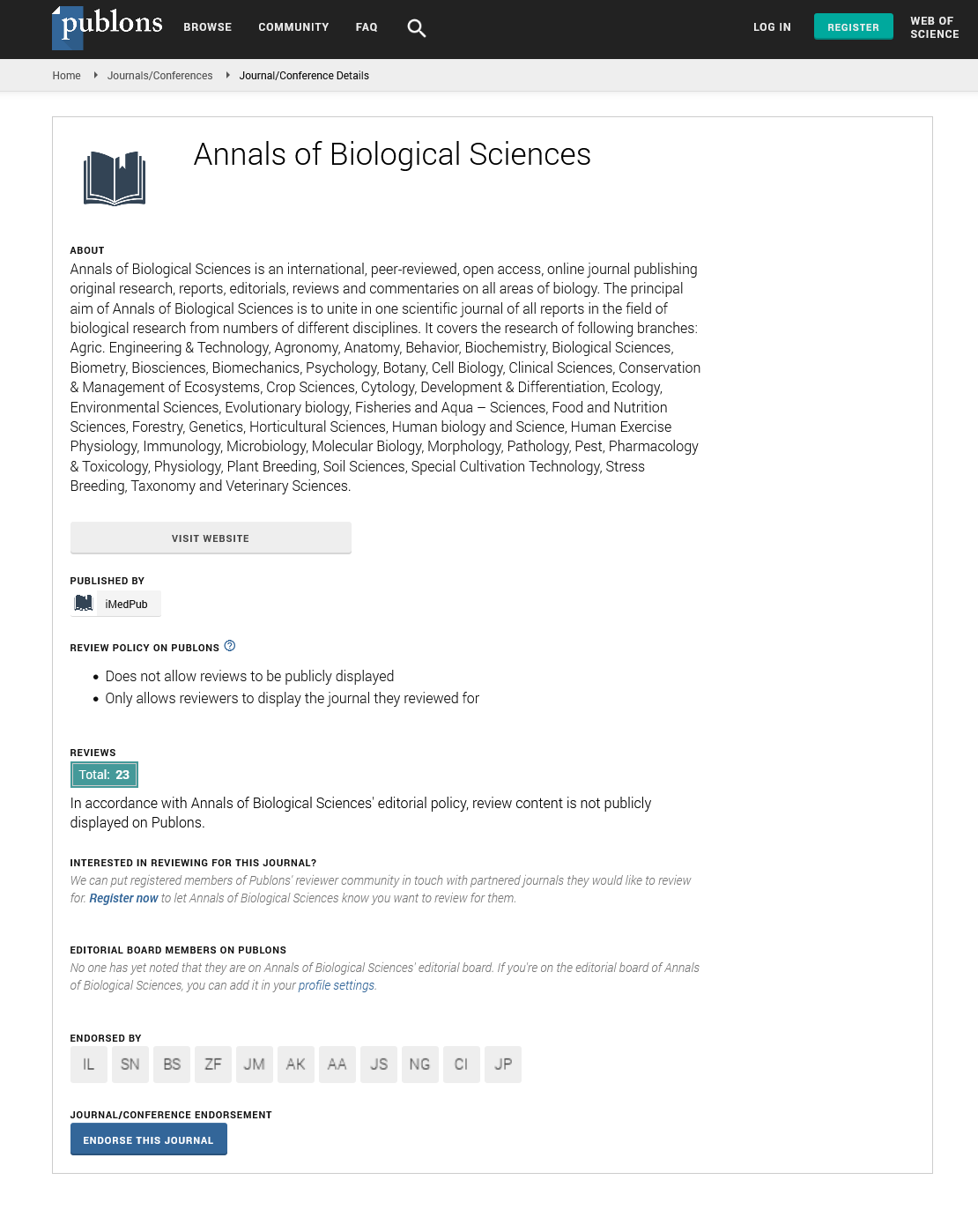ISSN : 2348-1927
Annals of Biological Sciences
Improvement of rice variety PAU 201 through marker assisted selection for grain color and bacterial blight resistance
ANNUAL BIOTECHNOLOGY CONGRESS
August 17-18, 2017 | Toronto, Canada
Kaur Rupinder, Mangat GS and Singh Kuldeep
Punjab Agricultural University, India
Posters & Accepted Abstracts: Ann Biol Sci
DOI: 10.21767/2348-1927-C1-003
Abstract
PAU 201, a very high yielding medium duration rice variety was released for cultivation in Punjab state in 2007, however, due to red pericarp color; the variety did not meet the specification of Food Corporation of India and was officially withdrawn in the year 2010 for cultivation in Punjab. Due to high yield potential, this variety covered more than 20% area in Punjab in two years after its release. In addition to red pericarp, this variety had only one bacterial blight resistance gene xa13. The red aleurone is due to single gene, designated as Rc7 and is located on chromosome 7. Both these genes are cloned and gene based primers have been designed. Due to consistent demand from farmers for improvement of this variety, we have improved this variety through MAS by replacing Rc7 allele with recessive allele rc7, and additional bacterial blight resistance gene Xa21. A set of BC2F4 progenies selected for white grain color and bacterial blight resistance having more than 90% of the recurrent-parent genome were evaluated for yield and yield components. Lines that significantly out-yielded the recurrent parent and the check cultivars in station trials are evaluated at multiple locations in national-level nurseries for identifying the lines that could be released as varieties. These lines, in addition to being released as cultivars, can also be used as immediate donors for further improvement of rice cultivars.
Google Scholar citation report
Citations : 406
Annals of Biological Sciences received 406 citations as per Google Scholar report
Annals of Biological Sciences peer review process verified at publons
Abstracted/Indexed in
- Google Scholar
- China National Knowledge Infrastructure (CNKI)
- WorldCat
- Publons
- ROAD
- Secret Search Engine Labs
Open Access Journals
- Aquaculture & Veterinary Science
- Chemistry & Chemical Sciences
- Clinical Sciences
- Engineering
- General Science
- Genetics & Molecular Biology
- Health Care & Nursing
- Immunology & Microbiology
- Materials Science
- Mathematics & Physics
- Medical Sciences
- Neurology & Psychiatry
- Oncology & Cancer Science
- Pharmaceutical Sciences
